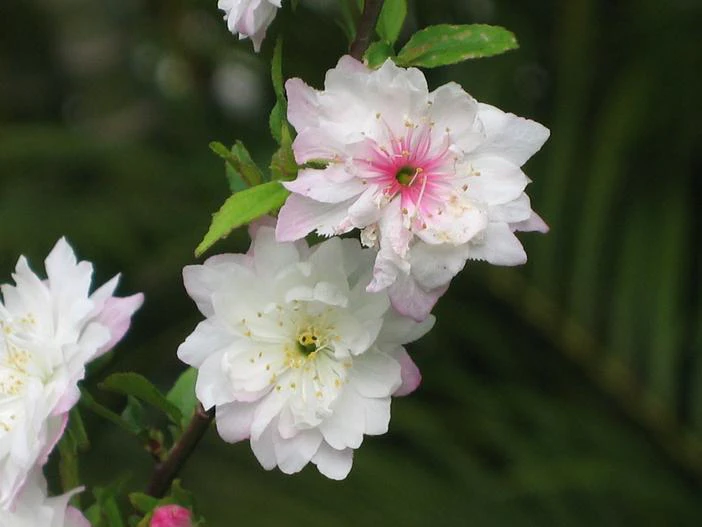Japanese Bush Cherry
(Prunus japonica)
Japanese Bush Cherry (Prunus japonica)
/
/

阿橋花譜 HQ Flower Guide
CC BY-SA 2.0




















Estimated Native Range
Climate Requirements for Horizon West, Florida
| This Plant | Your Site | Plant Suitability for Your Location | ||
|---|---|---|---|---|
| • Precipitation | 17" - 84" | 48" | Aquatic | Aquatic |
| • High Temp. | 66°F - 95°F | 92°F | Your summer temperatures are normal for this plant. | Excellent |
| • Low Temp. | -11°F - 55°F | 48°F | Your winter temperatures are normal for this plant | Excellent |
Summary
Japanese bush cherry is valued for its compact size, making it suitable for small gardens and urban landscapes. It is also used as a border planting or as part of a mixed shrubbery border. The plant is relatively low-maintenance, requiring well-drained, moist loamy soils and full sun to partial shade. It is drought-tolerant once established. The small, red to black cherries are edible and can be used in making jams, jellies, and pies, although they are not as commonly harvested as those of other Prunus species. While generally disease-resistant, it can be susceptible to pests like aphids and caterpillars, and diseases such as leaf spot.CC BY-SA 4.0
Plant Description
- Plant Type: Shrub
- Height: 4-6 feet
- Width: 4-6 feet
- Growth Rate: Moderate
- Flower Color: Pink, White
- Flowering Season: Spring
- Leaf Retention: Deciduous
Growth Requirements
- Sun: Full Sun, Part Shade
- Water: Medium
- Drainage: Medium
Common Uses
Bird Garden, Border Plant, Butterfly Garden, Edible*Disclaimer: Easyscape's listed plant edibility is for informational use. Always verify the safety and proper identification of any plant before consumption., Hedges, Low Maintenance, Potted Plant, Showy Flowers
Natural Habitat
native to Korea and Eastern China, often found in open woodlands and along forest edges
Other Names
Common Names: Japanese Flowering Cherry, Oriental Bush Cherry, Chinese Plumtree, Japanese Almond Cherry, Japanese Bush Cherry, Niwa-Ume, Korean Cherry, Yu Li
Scientific Names: Prunus japonica, Amygdalus glandulosa, Cerasus japonica, Cerasus japonica, Cerasus japonica f. albiflora, Cerasus japonica var. engleri, Cerasus nakaii var. porphyrea, Microcerasus glandulosa f. consociiflora, Microcerasus glandulosa var. japonica
GBIF Accepted Name: Prunus japonica